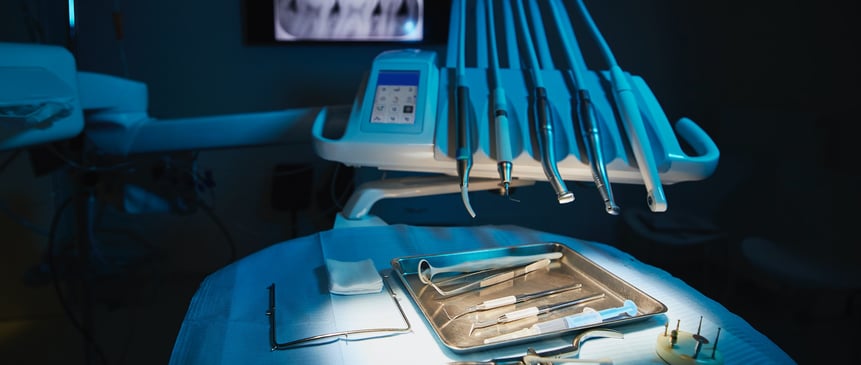The Evolution of Dental Technology
SMILE SMART READS
11/11/20245 min read


A Historical Perspective on Dental Technology
The origins of dental technology can be traced back to prehistoric times, where early humans utilized rudimentary tools made from stones, bones, and shells to address oral health issues. Archaeological findings suggest that even during this period, there was a conscious effort to maintain oral hygiene, indicating that our ancestors were aware of the importance of dental care. As civilizations progressed, so did dental practices. Ancient Egyptians, for instance, used papyrus scrolls to document treatments for toothaches and dental diseases, showcasing an early understanding of oral health.
Significant advancements in dental care began to emerge in the 19th century, particularly with the introduction of anesthesia. The use of nitrous oxide and ether revolutionized dental procedures by alleviating the pain and anxiety associated with dental work, enabling dentists to perform more complex procedures with greater ease. This breakthrough laid the groundwork for modern dentistry, as it allowed for longer and more intricate operations without the discomfort experienced by patients in earlier times.
Another landmark development was the invention of the dental drill. Initially designed in the late 18th century, it underwent several refinements that significantly improved the efficiency and effectiveness of cavity treatments. The electric dental drill, introduced in the 20th century, brought about further enhancements, facilitating precise and rapid dental procedures that transformed patient care dramatically. Furthermore, the introduction of dental x-rays in the early 20th century provided a revolutionary method for diagnosing dental issues. This technological advancement allowed dentists to visualize the underlying structures of teeth and bones, thus enhancing treatment planning and improving patient outcomes.
Overall, the evolution of dental technology from primitive tools to modern innovations highlights a continuous journey of improving patient care. Each advancement in the field has not only expanded treatment options but has also played an essential role in promoting oral health awareness, ultimately leading to the sophisticated practices we see today.
Modern Innovations in Dental Technology
The dental industry has experienced remarkable transformations through modern innovations, making patient care more effective and efficient. One of the most significant advancements is the advent of digital imaging techniques. Unlike traditional X-rays, digital imaging produces high-resolution images that are instantly viewable. This allows dental practitioners to make quicker diagnostic decisions, enhancing accuracy while minimizing patient exposure to radiation. The ability to store and manipulate these images digitally also fosters better communication between dental professionals and their patients, leading to a more informed care experience.
Moreover, Computer-Aided Design and Computer-Aided Manufacturing (CAD/CAM) technology has revolutionized the production of dental restorations. This advanced technology allows for the design of precise dental crowns, bridges, and veneers using 3D modeling software. The accuracy of CAD/CAM systems significantly reduces the chances of fitting issues and often allows restorations to be completed in a single visit, which greatly enhances patient satisfaction and reduces the time spent in the dental chair.
Another notable development is laser dentistry, which has transformed various dental procedures such as tooth decay removal, gum reshaping, and teeth whitening. The utilization of lasers provides benefits such as reduced bleeding and swelling, minimized discomfort, and shorter recovery times for patients. This innovation is especially advantageous for those who experience dental anxiety as it presents less invasive alternatives compared to traditional tools.
3D printing is yet another groundbreaking innovation making waves in dental care. This technology allows for the rapid prototyping of dental models, aligners, and even surgical guides tailored specifically to a patient's needs. By streamlining the production process, 3D printing not only accelerates the time of treatment but also enhances the overall customization of dental solutions, ensuring patients receive care that fits their individual circumstances perfectly.
The Impact of Technology on Patient Care
The rapid advancement of dental technology has significantly transformed patient care, ushering in an era where treatment experiences are markedly improved. One of the most profound benefits of these advancements is the reduction of pain associated with various dental procedures. Modern techniques, such as laser dentistry, allow for minimally invasive treatments that reduce discomfort and enhance recovery time for patients. This evolution not only makes dental visits more tolerable but also encourages patients to seek necessary treatments without fear.
Furthermore, technological advancements have led to the development of more efficient treatment plans. Digital imaging and computer-aided design/computer-aided manufacturing (CAD/CAM) have revolutionized diagnostic processes. Dentists are now capable of producing precise 3D images of a patient’s dental structure, which greatly enhances their ability to plan effective treatment strategies tailored to individual needs. This level of personalization not only leads to better clinical outcomes but also builds trust between patients and their dental providers.
Patient engagement has also seen significant enhancement through educational tools and communication technologies. For example, informed consent and adherence to treatment recommendations have been improved through the use of interactive apps and online platforms that educate patients about their procedures and expected outcomes. By empowering patients with knowledge, practitioners are witnessing higher rates of compliance and satisfaction. Testimonials from patients consistently highlight how these advancements have made them feel more in control of their dental health, leading to a more collaborative relationship with their dental care providers.
In real-world applications, many dental professionals have observed firsthand the positive effects of these technological changes. As patients experience reduced anxiety and improved outcomes, their overall perception of dental visits evolves, fostering a culture of proactive oral health care. These advancements not only exemplify the benefits of modern technology in dentistry but also reaffirm the importance of continuous innovation in enhancing the quality of patient care.
The Future of Dental Technology
The landscape of dental technology is undergoing constant transformation, opening up various avenues for improved patient care and efficiency. One of the most prominent trends is the integration of artificial intelligence (AI) into dental practices. AI's ability to analyze vast amounts of data in real-time allows for highly accurate diagnostics of dental conditions. For instance, AI algorithms can evaluate dental images to identify cavities or gum diseases earlier than ever before, providing dental professionals with enhanced tools for preventive care and treatment planning. This technology not only improves diagnosis but also facilitates personalized treatment tailored to individual patient needs.
Additionally, the rise of tele-dentistry is reshaping patient interactions. The concept allows for remote consultations where patients can receive initial assessments or follow-ups without the need for in-person visits. This approach increases accessibility for patients in rural or underserved areas and serves to alleviate the burden on dental offices. As communication technologies advance, the quality of tele-dentistry services continues to improve, making it a practical solution for many dental concerns. This evolution encourages timely interventions and fosters ongoing patient engagement, contributing positively to overall oral health.
Advancements in biomaterials also promise significant enhancements in dental restorations. Innovative materials that mimic the natural properties of teeth, such as improved composites and bioactive ceramics, are being developed. These new materials not only provide greater durability and aesthetics but also promote dental health by interacting positively with surrounding tissues. As research in this area progresses, the possibilities for restorative dentistry are vast, with the potential for materials that actively contribute to the healing process.
As we explore these emerging trends, it becomes evident that the future of dental technology is poised to create transformative experiences for patients. With the integration of AI, tele-dentistry, and revolutionary biomaterials, dental care will become more efficient, personalized, and accessible than ever, leading to better outcomes for patients and the industry as a whole.
